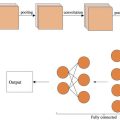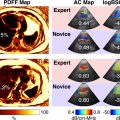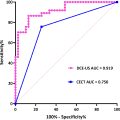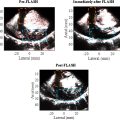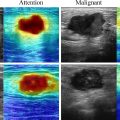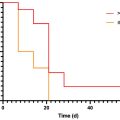Abstract
This is the first of a two-part article in which we focus on the Ultrasound (US) appearance of the normal median nerve (MN) and its main branches. The detailed anatomy and US anatomy of the MN course are presented with high-resolution images obtained with the latest-generation US machines and transducers. Variations are discussed to avoid misinterpretation of normal findings.
Introduction
The median nerve (MN) is one of the five terminal branches of the brachial plexus ( Fig. 1 a).

It is a mixed nerve that provides motor innervation to most of the muscles located at the volar aspect of the forearm, to part of the muscles of the thenar eminence, and to the first two lumbrical muscles at the hand ( Table 1 ). It is also a sensory nerve, innervating the radial two-thirds of the hand [ ].
| Muscle | Branch originating from |
|---|---|
| Pronator teres | MN. The branch may arise proximal to the elbow |
| Palmaris longus | MN |
| Flexor digitorum superficialis | MN |
| Flexor carpi radialis | MN |
| Flexor pollicis longus | AIN |
| Radial part of the flexor digitorum superficialis | AIN |
| Pronator quadratus | AIN |
| Radial first two lumbricals | Palmar digital branch of the MN |
| Flexor pollicis brevis | |
| (superficial part) | tmb |
| Abductor pollicis brevis | tmb |
| Opponens pollicis | tmb |
Carpal tunnel syndrome is one of the most common neuropathies of the upper limb [ ]. Other locations where the pathology of the MN may be encountered are less frequent [ ].
Ultrasound (US) is a well-known imaging modality to demonstrate the normal peripheral nerves and their pathological conditions. US is particularly effective when nerves lie superficially along their course, enabling the depiction of fine anatomical details with high-frequency transducers [ ].
This article is the first of a two-part series regarding the US features of the MN. It aims to provide an in-depth review of the normal course of the nerve and its relationship with contiguous anatomical structures, through images obtained with the latest-generation US machine and transducers. Additionally, we discuss the main variations encountered during MN examinations.
This first part will facilitate the understanding of the pathological conditions discussed in Part 2.
General considerations for the US study of the MN
The US appearance of nerves is briefly mentioned in this article.
Peripheral nerves exhibit a honeycomb pattern in axial sonograms due to their fascicular structure. Axial scanning is recommended because, once the MN is located at a certain level, it is easy to follow its course using the elevator technique, with continuous sonograms proximally and/or distally ( Movie 1 ) [ , ]. We typically do not acquire long-axis images of the normal MN. Longitudinal images are suggested when abnormalities are found or suspected [ ].
Nerve fascicles appear hypoechoic in a hyperechoic background of connective tissue of the interfascicular epineurium, surrounded by the external epineurium [ , ].
For the MN, the fascicles begin to follow a regular course distal to the elbow, whereas proximally, the nerve shows a more diffuse plexiform pattern [ ]. Moreover, at a proximal level at the upper arm, a few larger fascicles are present, whereas from the elbow onward, there are only smaller similar fascicles [ ].
From a practical perspective, caution should be taken when judging on US the proximal MN at the level of the upper arm ( Fig. 1 a), as the fascicles are fewer and may physiologically appear slightly larger ( Fig. 1 b). Near the elbow ( Fig. 1 c) and distally, fascicles are usually smaller. Comparison to the opposite healthy side may help define the normal echostructure of the nerve, except for patients with polyneuropathies, in which nerve fascicles may be enlarged on both sides
We suggest starting the examination of the MN with an intermediate frequency transducer (around 14 MHz) and then completing the evaluation with a higher frequency (18–24 MHz) where the nerve is superficial to improve the depiction of the fascicular nerve pattern, and to better visualize the distal branches at the wrist-hand. Compound imaging and post-processing techniques, such as speckle reduction, may also improve the visualization of fascicles [ ].
Recent US machines with a high-frequency transducer (22 MHz) can delineate very small fascicles with a CSA of 0.04 mm 2 . However, when fascicles are closely apposed, US may fail to detect individual structures, instead showing a single hypoechoic cluster, which represents two or more fascicles at histology. In other words, US may have some limitations in accurately demonstrating the very small amount of interfascicular epineurium between strictly near fascicles [ ].
Very high-frequency (50–70 MHz) transducers may allow for better recognition of fascicles when the nerve is superficial [ ]. However, these transducers permit evaluation of only the first centimeter of tissue and currently seem limited in clinical practice due to low penetration [ ].
Normal anatomy/US anatomy of the MN; principal anatomical variations
The MN arises from the lateral and medial cords of the brachial plexus ( Fig. 1 a), receiving innervation from C6 to T1 nerve roots [ ]. The course proximal to the axilla is not covered in this article.
At the axilla, the MN lies near the axillary artery ( Fig. 1 b). The nerve descends beyond the inferior border of the pectoralis major and enters the upper arm at the brachial canal, adjacent to the brachial artery (BA). The MN is located anterior to the medial intermuscular septum [ ]. Initally, the nerve lies lateral or anterolateral to the BA, between the biceps brachii and the brachialis muscles. As the MN progresses distally, it passes over the artery with a described “S”- shaped course, so that at the distal aspect of the upper arm, it is located medial to the BA ( Fig. 1 c). Variations exist, and in some cases, the artery may pass over the nerve [ ]. Additionally, a higher division of the BA in the radial and ulnar artery at the arm can also be encountered ( Fig. 1d ) [ ]. Despite variations, it is easy to locate the MN at the upper arm with US due to its proximity to the BA ( Fig. 1 a). The medial border of the biceps muscle at the middle/distal third of the upper arm may serve as an anatomical landmark to start the examination when the nerve also needs to be studied proximal to the elbow ( Fig. 1 c). The artery is demonstrated as an anechoic vessel, and Doppler imaging is usually not necessary to confirm it. Local veins are easily compressible in contrast to the BA. The MN lies next to the artery. The transducer is then moved in the axial plane, proximally and distally with the elevator technique.
An anastomosis of the MN with the musculocutaneous nerve may be found in up to 30% of the cases [ ].
A possible variation associated with the MN’s course at the distal arm is the presence of a supracondylar process. It is a nonpathological bony spur-like projection of the distal humerus, located 5–7 cm proximal to the medial epicondyle, present in 3% of the population. Its length is variable (2–20 mm). It may be associated with a fibrous band that connects it to the medial epicondyle, known as Struthers’ ligament. The MN and/or the BA may pass deep to the ligament and may rarely be compressed. The pronator teres (PT) may also attach to it [ ]. On US, the supracondylar process appears as a bony structure projecting from the normal humerus ( Fig. 2 a) [ ]. It may be missed during US evaluation of the region, particularly when the spur is small and not close to the MN or the BA ( Fig. 2 b, 2c). Correlation with X-ray is recommended if suspected on US ( Fig. 2 d, 2e) [ ].

The MN in the upper arm provides only sympathetic branches to the BA, but sometimes may give rise to a branch for the PT [ ].
The nerve exits the brachial canal to enter the antecubital fossa at the level of the elbow ( Fig. 3 a, 3b). The MN is located superficial to the brachialis muscle, adjacent to the BA and the distal biceps tendon [ ]. The lacertus fibrosus is an aponeurotic band that originates from the medial border of the biceps; it passes over the MN, to cover the PT and the flexor group of muscles ( Fig. 3 a) [ ].

Continuing with axial scanning, the transducer is placed at the elbow at the level of the humeral trochlea cartilage ( Fig. 4 a) [ ]. The biceps tendon is located superficial to the brachialis muscle. The BA is medial to it and more medially lies the MN ( Fig. 4 a); this anatomical landmark image has also been termed the “ BAM ” sign (Biceps, Artery, Median nerve) and may be a starting point for the examination [ ]. A variation is an atypical course of the MN that lies more distal to the BA ( Fig. 4 b) [ ].

The lacertus can be appreciated on US, with a frequency of at least 18 MHz, as a fibrillar band that originates from the biceps tendon and overlies the PT ( Fig. 3 a, 5 ) [ ]. Dynamic scanning during gentle supination-pronation helps to reveal this thin structure ( Movie 2 ).

The MN is followed distally as it passes between the humeral and ulnar head of the PT, described as the pronator tunnel ( Fig. 4 c). In our experience, the nerve at this level may normally appear flattened ( Fig. 3 b, 4 c) [ ]. Infrequently, the ulnar head of the PT may be absent ( Fig. 4 d) [ ].
The MN exits the pronator tunnel to pass under the sublimis bridge ( Fig. 3 b) [ ]. The bridge is a fibrous arch between the radial and humeral head of the flexor digitorum superficialis [ ]. The arch is usually tendinous ( Fig. 6 ) [ ].

In some patients, a possible pitfall when evaluating this region is an artifactual acoustic shadow that masks the normal MN ( Fig. 7 ).

At the elbow and proximal forearm, the MN supplies the PT, the flexor carpi radialis, the palmaris longus, and the flexor digitorum superficialis ( Table 1 ). The anterior interosseus nerve (AIN), one of the main terminal branches of the MN, originates 18 to 40mm distal to the medial epicondyle, usually under or distal to the PT [ , , ]. Even proximal to its detachment and to the elbow, the fascicles that will give rise to the AIN are usually located in specific positions ( Fig. 8 ) [ , ]. The AIN travels between the flexor digitorum profundus and the flexor pollicis longus to direct to the volar surface of the interosseous membrane, together with the anterior interosseous artery. The origin of the AIN may be difficult to depict on US. The easiest way to demonstrate this branch is to locate, at the middle third of the forearm, the anterior interosseous artery near the interosseus membrane; the AIN can be depicted as a small fascicular structure next to it ( Fig. 6 b) and then it may be followed proximally. In slender patients with proximal division of the AIN, the origin of the branch may be demonstrated with high-frequency transducers ( Fig. 9 ).


Stay updated, free articles. Join our Telegram channel

Full access? Get Clinical Tree



